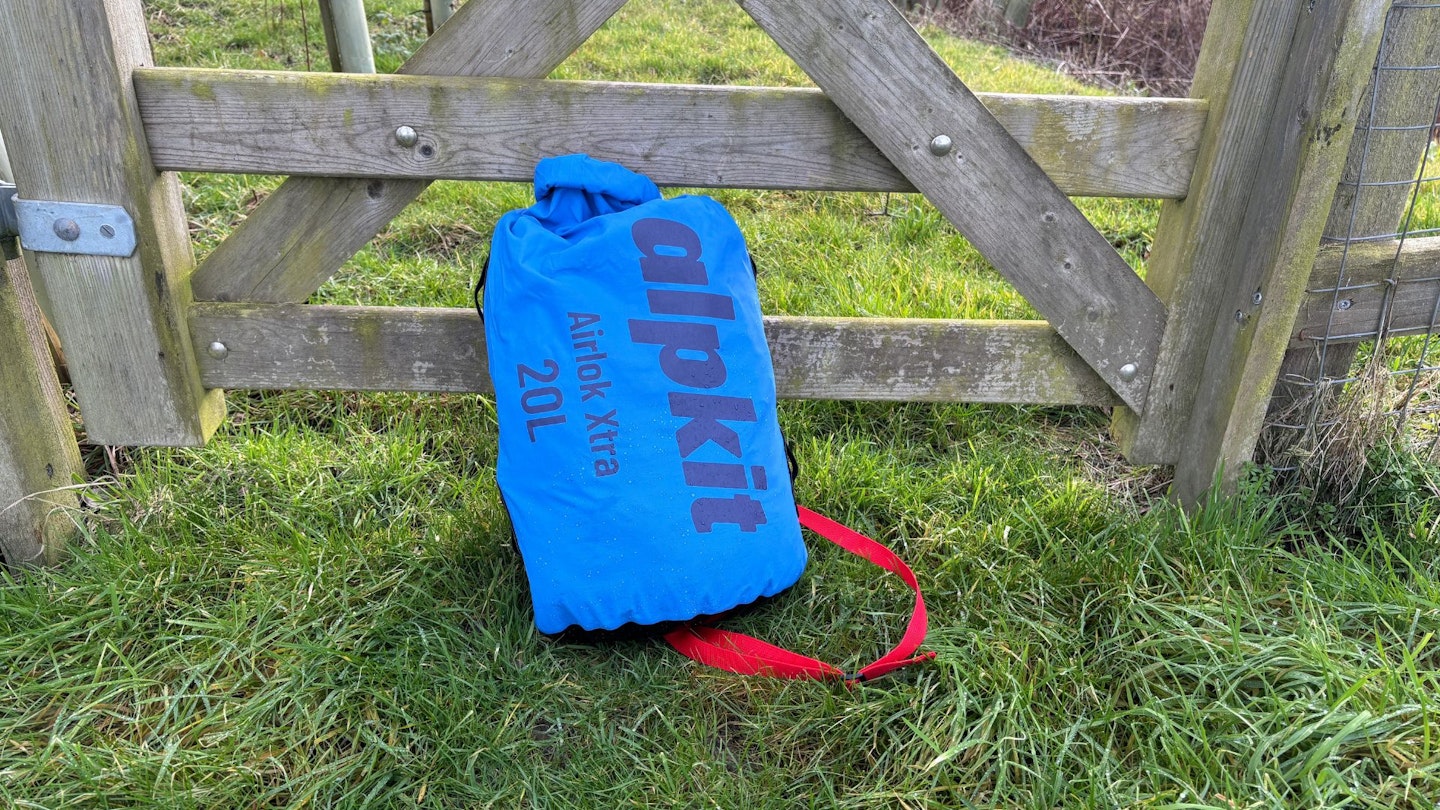When it comes to camping, kayaking, hiking, or any other outdoor pursuit, keeping your gear dry is more than a matter of convenience – it's absolutely essential to keep you from having a miserable time. From protecting your electronics and food supplies, to ensuring your clothing stays ready for use, the best dry bags can make the difference between a smooth adventure and a soggy ordeal.
But with so many options on the market, how do you choose the right dry bag for your needs?
In this article, we’ll test and review a selection of dry bags designed for outdoor use, assessing how they perform in real-world conditions. Whether you're a weekend camper, a hardcore adventurer, or someone who simply enjoys spending time outdoors, this guide will help you find a dry bag that’s up to the task.
Read on to discover which dry bags are worth your investment and which might leave your gear high and (not so) dry.
How we tested the best dry bags
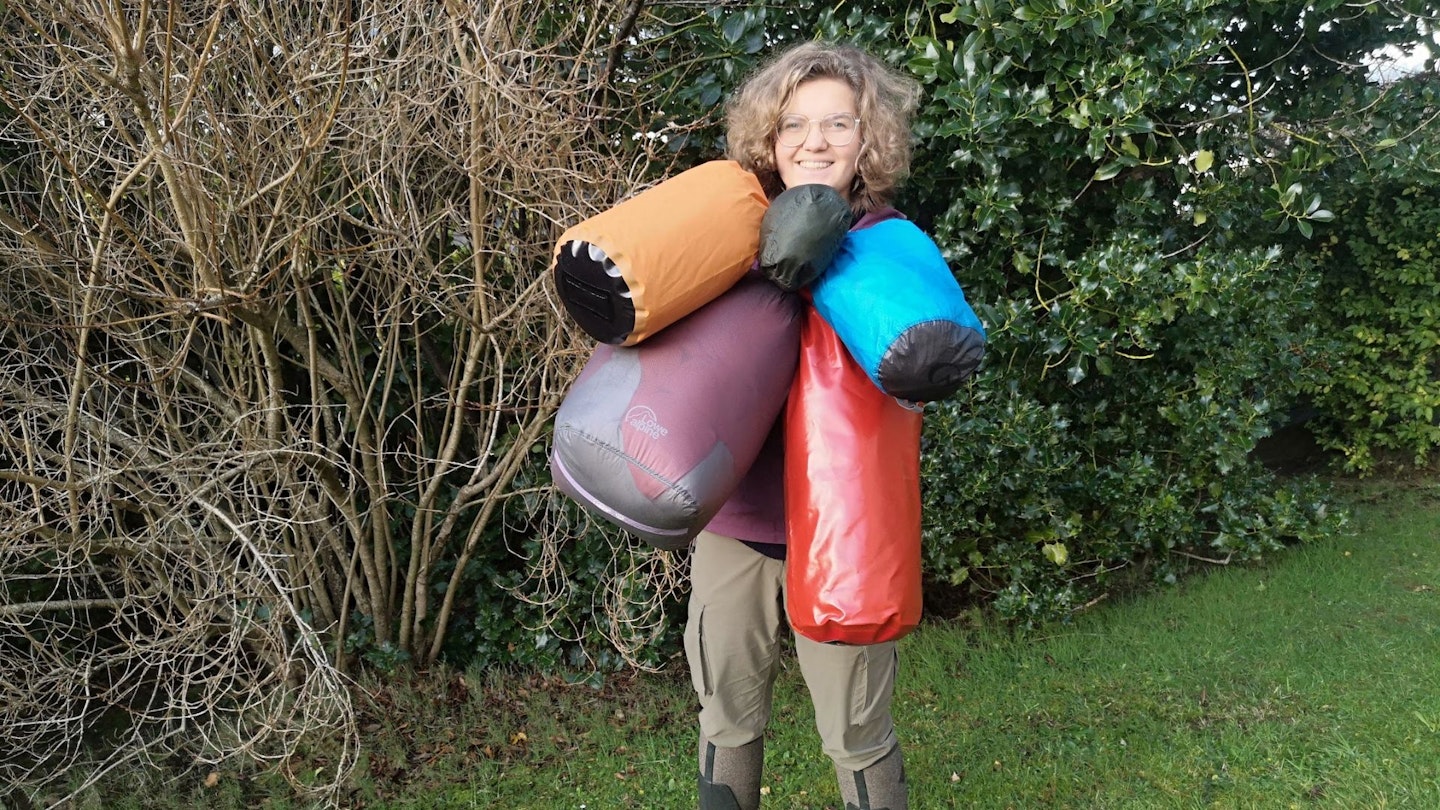
On the face of it, dry bags are a very simple product to test, but to truly sort the best from the worst, they require substantial testing, which is exactly what LFTO team members Rob Slade and Fliss Freeborn have done here.
Over a period of a couple of months we used and abused these dry bags, using them inside our hiking backpacks, carrying our kit in them on the way to swims and putting them to work regularly. When testing, the key criteria we focused on was: waterproofing, weight, value for money, durability and features.
Best dry bags for 2025
Investing in a set of dry bags makes a lot of sense, as it gives you multiple places to store your kit and organise it in your rucksack. Of course, you just have to make sure you’re getting a bundle of practical sizes.
Luckily, that’s the case with this Sea to Summit Lightweight set. You get a 20L bag, 13L option and smaller 8L sack (a set of smaller volumes is also available), all three in different colours. That last bit is key, as it makes it easy for you to grab exactly what you want from the depths of your rucksack.
The 20L option here is a great inclusion, as it’s large enough to act as a rucksack liner if you’re using a hiking daypack. Alternatively, it’s also large enough that you should be able to fit a sleeping bag in there if you’re going wild camping and need to keep it protected.
The 70D fabric is recycled, bluesign approved and comes with a PFC-free DWR finish, so water tends to beads up on the surface. However, when the material was exposed to sustained showers there was some wetting out (though no water ingress).
One nice touch we really like is that the buckles, which already feel more durable than many others on the market, can easily be replaced simply by undoing a screw. This helps boost the lifespan of a product, reducing waste in the process.
Another plus is the white interior, which helps a little when you’re trying to locate a particular item inside.
A weight of 87g for the 20L, 73g for the 13L and 60g for the 8L is decent, though not ultralight. But then, you are getting a decent level of durability here.
Rounding off the features is a sturdy D-ring for attaching the bag to other things, plus a convenient hanging loop at the bottom for drying.
An RRP of £65 isn’t cheap, but these are quality dry bags and you can sometimes find them cheaper. If you don't need three, you can also buy them individually, with sizes ranging between 1.5L (£12) and 35L (£28).
Pros
- Solid range of sizes
- Rugged buckles are replaceable
- White interior makes it easy to find things
Cons
- Not cheap
| RRP: | £65 / $79.95 |
| Weight: | 87g/3.1oz (20L), 73g/2.6oz (13L) and 60g/2.1oz (8L) |
| Material: | Bluesign-approved, recycled 70D nylon fabric with a PFC-free DWR finish |
| Sizes available: | A 8L, 13L and 20L set, plus a 3L, 5L and 8L set |
If you want a cracking value, reliable set of bags you're not likely to get mixed up, then the Lifeventure Ultralight Dry Bags are for you.
These have proven indispensable for keeping various essentials dry in the damp conditions. The set includes 5L, 10L, and 25L bags, all made from high-tenacity ripstop nylon fabric with a siliconised outer coating and PU-coated interior, ensuring durability and waterproofing.
The roll-top closure with a lightweight Kross buckle provided a secure, watertight seal, and the elliptical shape maximized packing efficiency. Weighing just 33g, 40g, and 70g respectively, these bags added minimal weight to my pack, which is crucial for extended treks.
Priced at £36.99 for the set, the Ultralight Dry Bag Set offers excellent value for money, combining high-quality materials with practical design.
Their robust construction and reliable performance make them a worthwhile investment for any outdoor enthusiast seeking to protect their gear from the elements.
Pros
- Lightweight
- Great value for money
Cons
- May not be as durable as some other options
| RRP: | £36.99 |
| Weight: | 33g/1.2oz (5L), 40g/1.4oz (10L), and 70g/2.5oz (25L) |
| Materials: | Ripstop - Ultralight 30D siliconised ripstop fabric with taped seams |
| Sizes available: | A set of 5L, 10L, 25L |
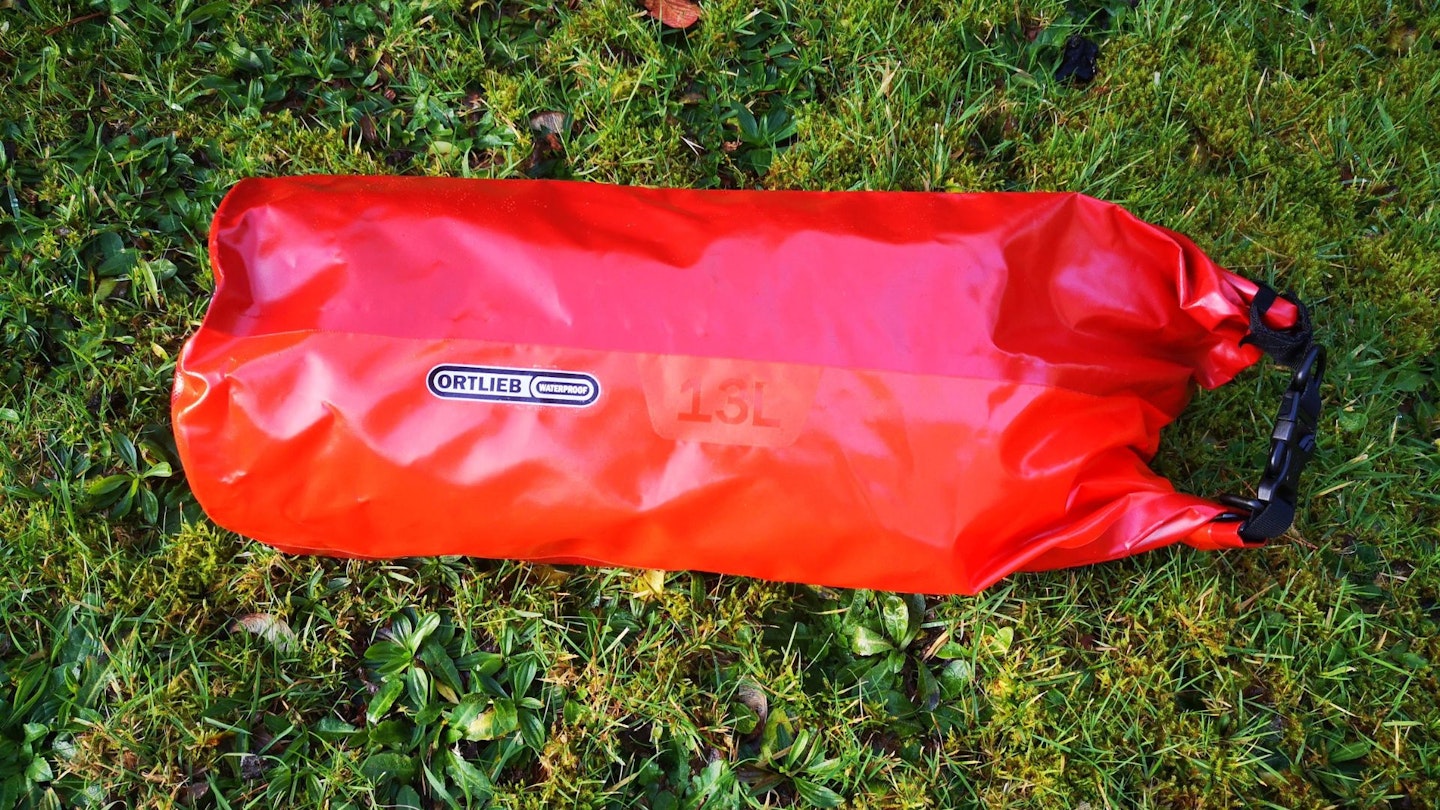
www.tredz.co.uk
During a camping trip in Scotland, the Ortlieb Dry-Bag Light 13L was essential for keeping my down sleeping bag dry in damp and unpredictable conditions.
Made from PD350 polyester fabric with a durable PU coating, it provided completely reliable waterproofing without adding enormous bulk to my pack. It's one of those bags that just feels completely sturdy, too.
The 13L capacity was just right for compressing and protecting a reasonably sized sleeping bag, while the roll-top closure with a secure buckle ensured a watertight seal, even when heavy rain pelted our backpacks on the way to the campsite.
Weighing 220g, this isn't exactly an ultralight option, but it's entirely submersible, and kept everything drier than a sunbadger on a tanning bed.
At £24, the Dry-Bag Light offers pretty great value for money, balancing high-quality materials with a thoughtful design that prioritises practicality.
While narrow and reasonably heavy, it's incredibly sturdy it’s perfect for keeping critical gear dry and organised during outdoor adventures. For those facing wet weather, this bag is a reliable choice.
Pros
- Extremely waterproof
- Durable construction
Cons
- Not lightweight
- Narrow opening
| RRP: | £23 |
| Weight: | 220g / 7.8oz |
| Materials: | PD350 coated polyester fabric with PD620 on the bottom |
| Sizes available: | 5L, 7L, 10L, 13L, 22L, 35L, 59L, 79L, 109L |
The Montane Waterproof Dry Bag 2L has proven to be an invaluable addition to our hiking bag – keeping socks, hat, and gloves dry despite snowy and damp conditions when in use.
The 40-denier siliconised nylon ripstop fabric feels sturdy yet lightweight, and the fully seam-sealed construction ensures no moisture seeps through, even after hours in a rucksack.
Its roll-top closure with an HDPE-stiffened buckle is easy to secure, creating a reliable seal that gives peace of mind. At just 25g, it adds virtually no weight to our kit, which is always a bonus on longer treks. The 2L capacity is ideal for small essentials, making it a compact and efficient addition to any kit inventory.
Priced at £12, this dry bag offers excellent value for money. While not waterproof to the point of being completely submersible, it performs perfectly for our needs, keeping spare layers or electronics ready to use. A highly recommended choice for any wet-weather adventurer.
Pros
- Lightweight
- Highly useful size
- Stiffened roll top
Cons
- Slightly flimsier than other designs
- Not fully submergible
| RRP: | £12 |
| Weight: | 25g / 1oz |
| Materials: | RAPTOR Fly Lite 40 denier Sil Nylon rip stop |
| Sizes available: | 2L, 6L, 15L |
Exped Fold Drybags BS
Here’s another set of dry bags, though this time you get four (3L, 5L, 8L and 13L). With an RRP of £59 that represents pretty good value, though it’s still not as cheap as the Lifeventure set.
A weight of 58g in the 13L version puts this dry bag in lightweight territory, with no comparable size in this test weighing as little. The 3L weighs just 28g, the 5L 36g and the 8L 41g.
The outer is coated with a DWR treatment and has a hydrostatic head rating of 10,000mm, and it does a great job of shedding water. When tested in substantial downpours, the rain consistently beaded on the surface and ran off, with no noticeable wetting out.
The 70D fabric offers a good balance of durability and weight, which is perfectly adequate for use inside of rucksacks. If you’re looking for a dry bag to handle rougher treatment and lash to the outside of something, you may want something with a more robust material.
Worth noting is that the base of the dry bags is on the narrow side, so they don’t stand up very well when you pop them on the floor and search for your sandwich mid-hike.
As with many dry bags, features are pared back. There are no lash points or D-rings, but you do get a hanging loop at the bottom, while the interior is white in order to help you find key bits of kit more quickly.
Pros
- Genuinely lightweight
- Dependable water resistance
- Four-pack makes for good value
Cons
- Some competitors have more features
| RRP: | £59 |
| Weight: | 28g/1oz (3L), 36g/1.3oz ( 5L), 41g/1.5oz (8L), 58g/2oz (13L) |
| Material: | 70 D taffeta nylon, PU coated, seam taped, 10,000mm HH, OEKO-TEX 100 certified, DWR C6 |
| Sizes available: | Set of 3L, 5L, 8L, 13L, or individual options from 1L-40L |
Dry bags are not the sexiest of products and there’s not always a huge amount to separate one from another. Given that, it’s always exciting when there’s more going on, as there is here with the Alpkit Airlok Xtra 20L.
Handily, it comes with a detachable shoulder strap, which allows you to carry it. The strap is removable, but it can be a bit of a faff to disconnect it.
There’s also five lashing points around the bag (two on each side, one on the bottom), giving you a range of options when securing this dry bag.
For example, you could lash this bag onto the outside of your hiking backpack and store camping kit inside of it. Or you could strap it onto a pannier frame on a bike or the front of a stand-up paddleboard.
The 320D fabric has proved durable thus far and is certainly more rugged than some of the lighter options you get. If the fabric does end up with a hole after an accident, it can be repaired using the brand's Tuff Tape, which is great for reducing waste.
That comes at a sacrifice, as the Airlok Xtra 20L weighs in at 162g with the strap or 144g without.
The 20-litre version here is plenty big enough for multiple layers or a sleeping bag, but you can also get a mix of other sizes ranging from 3L to 65L.
A hydrostatic head rating of 10,000mm is decent, but we did notice some wetting out when we left the bag under a heavy downpour. Still, there are taped seams and our belongings never actually got wet.
Pros
- Great features
- Fabric can be repaired if needed
- Decent value
Cons
- Outer material is prone to wetting out
| RRP: | £20.99 / $27.49 |
| Weight: | 162g/5.7oz with strap, 144g/5.1oz without |
| Material: | 320D Taslan nylon coating, PU 10,000mm hydrostatic head, fabric weight of 160g/m2 |
| Sizes: | 3L, 8L, 13L, 20L, 65L |
What is the best material for a dry bag?
The best materials for dry bags are PVC (polyvinyl chloride) and TPU (thermoplastic polyurethane), each offering distinct advantages. PVC is known for its affordability, toughness, and waterproofing, but it can be heavier and less environmentally friendly.
TPU, on the other hand, is lighter, more flexible, and environmentally sustainable, making it ideal for those who prioritise portability and eco-consciousness.
What's the difference between a dry bag and a dry sack?
A dry bag is typically heavier-duty, designed to be waterproof and durable, often used in scenarios like kayaking or rafting. Dry bags are made from thick, reinforced materials with roll-top closures and often feature straps for carrying.
A dry sack is lighter and more compact, primarily used for organizing and protecting gear within another bag, such as a backpack.
Do dry bags really work?
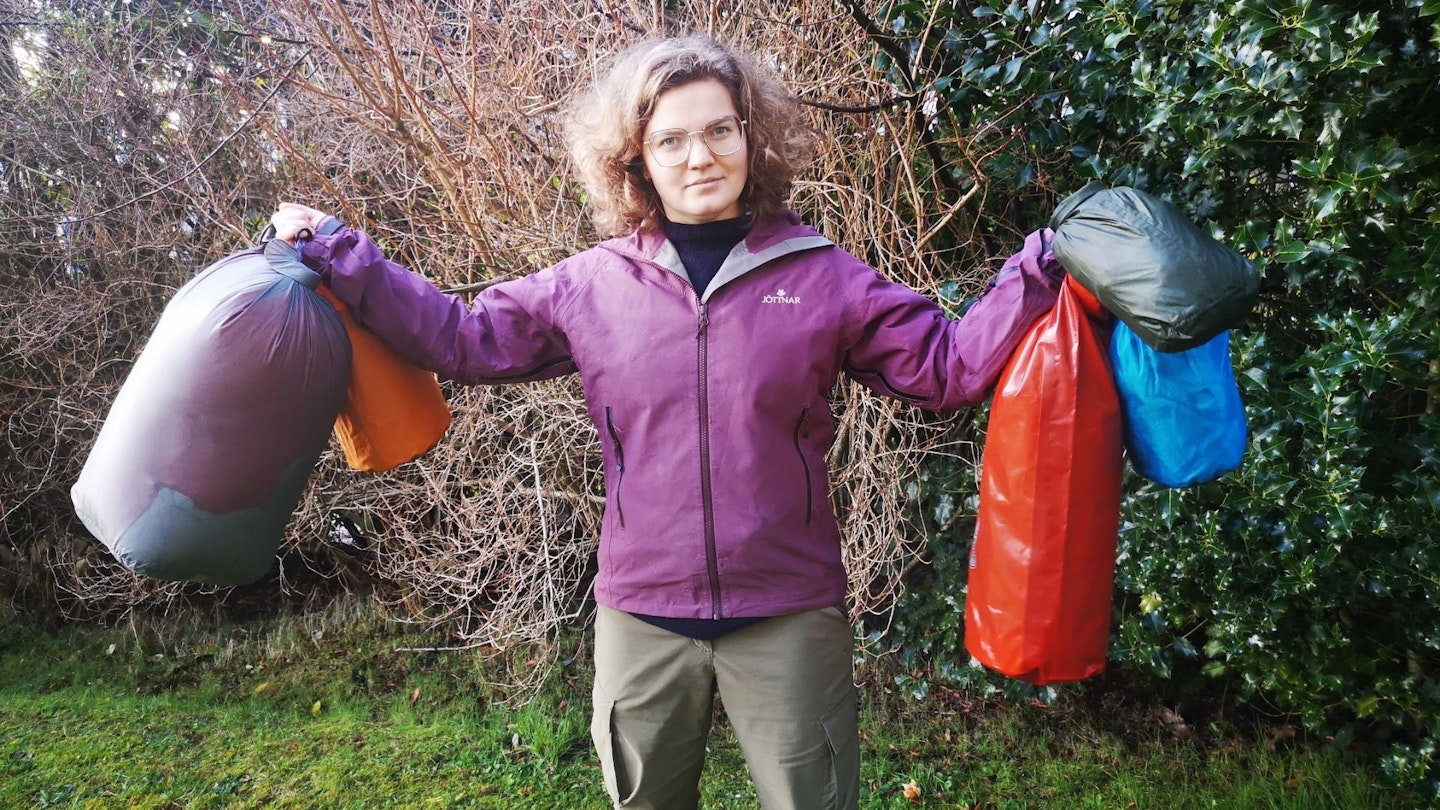
Yes, dry bags work exceptionally well when used correctly. With a proper roll-top closure and high-quality materials, dry bags can protect your gear from water, even during full submersion.
However, for prolonged underwater exposure, their performance may vary depending on the brand and construction quality.
What can fit in a 5L dry bag?
A 5L dry bag is ideal for small essentials like a phone, wallet, keys, a compact first-aid kit, or a lightweight jacket. It’s perfect for keeping these items dry without taking up much space in your gear.
What can a 10L dry bag hold?
A 10L dry bag can hold bulkier items such as a change of clothes, a pair of shoes, or a small towel. It’s a great size for day trips or short excursions where you need a bit more storage.
Is a 50L bag enough?
A 50L dry bag is suitable for multi-day trips or group outings, as it can store larger items like sleeping bags, tents, and cooking gear. For solo adventurers, this size may be excessive unless you’re carrying equipment for specialized activities.
What can I use instead of a dry bag?
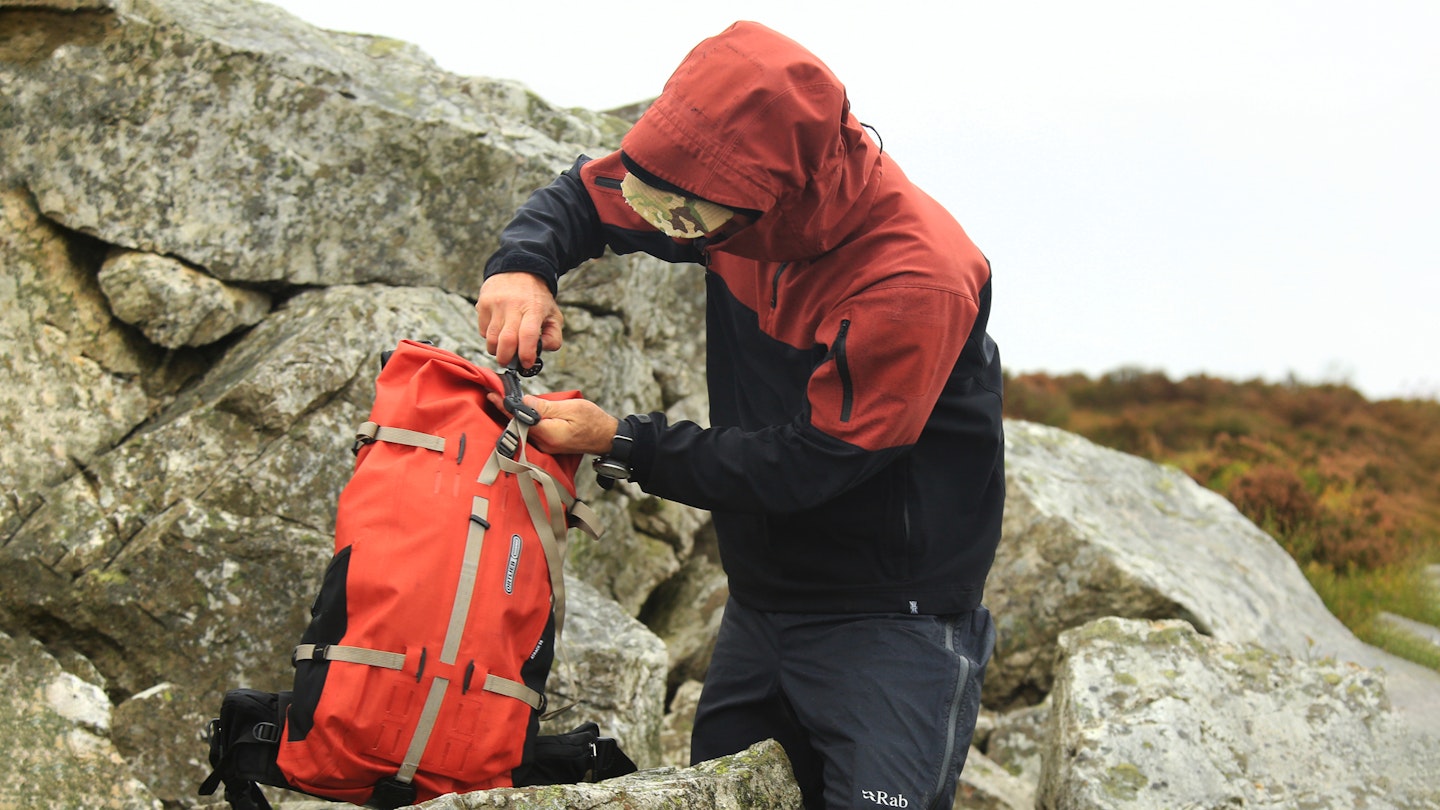
Alternatives to dry bags include:
-
Zip-top freezer bags: For small items like phones or snacks.
-
Garbage bags: Useful for lining backpacks to add waterproofing, though they lack durability.
-
Waterproof backpacks: These combine storage with waterproofing but can be bulkier.
Are dry bags 100% waterproof?
Most dry bags are designed to be highly waterproof and protect gear from rain, splashes, or short submersion. However, no dry bag is guaranteed to be 100% waterproof under all conditions, such as prolonged or deep submersion.
Which is better, PVC or TPU dry bags?
PVC dry bags are better for heavy-duty use and affordability, making them great for rugged activities like whitewater rafting. TPU dry bags excel in being lightweight, eco-friendly, and more flexible, suitable for hiking or kayaking where portability is key.
How do I choose a dry bag?
To choose the right dry bag:
-
Assess your needs: Consider the activity and whether you prioritise durability, portability or capacity.
-
Size: Choose a size appropriate for what you’ll carry. We find 5-10L ideal for essentials, 20-30L for larger personal gear (and lining a hiking daypack) or 50L+ for group or extended trips.
-
Material: PVC for toughness, TPU for lightweight versatility.
-
Closure: Look for a reliable roll-top design.
-
Features: Extras like backpack straps, daisy chains, hanging loops or transparent panels can add value.
About the authors
Your testers for these dry bag reviews are LFTO deputy editor Rob Slade and staff writer Fliss Freeborn. Between them, they have decades of experience using and abusing outdoor kit while hiking, camping and exploring.
Before joining LFTO, Rob had stints as content editor at 220 Triathlon magazine and editor at Adventure Travel magazine (now known as Wired for Adventure). His adventures have taken him to the summit of the UK's highest peaks via Norway, the Alps and New Zealand.
Fliss is our Scotland-dwelling wild child. Some say she spends more time frolicking around outdoors than she spends at her desk and, well, we can't blame her.





